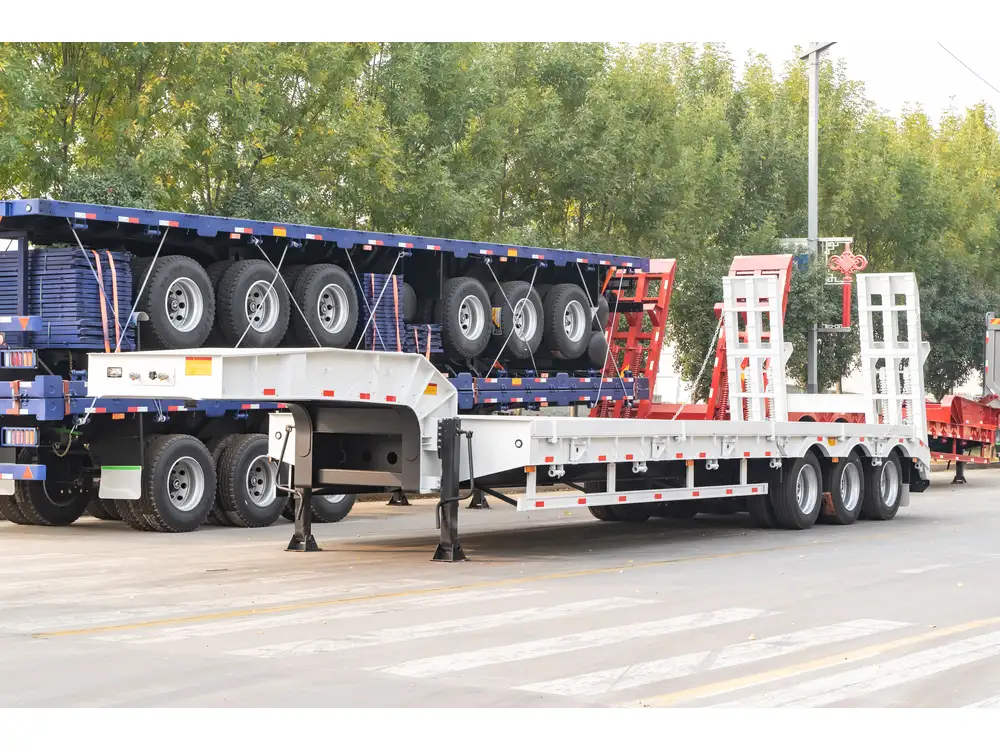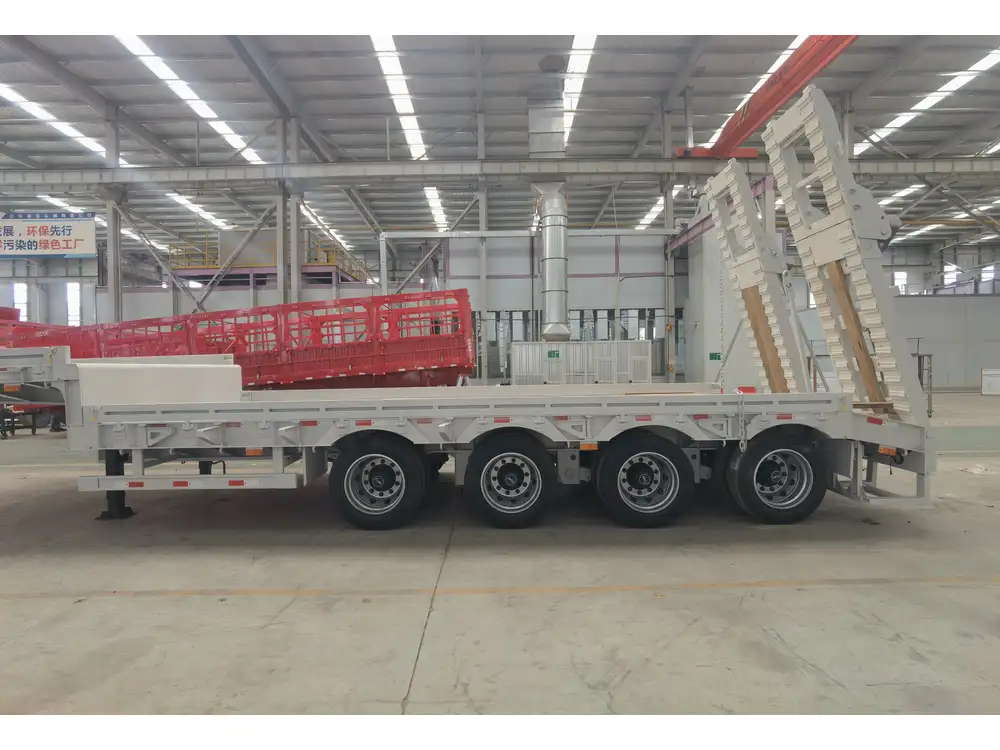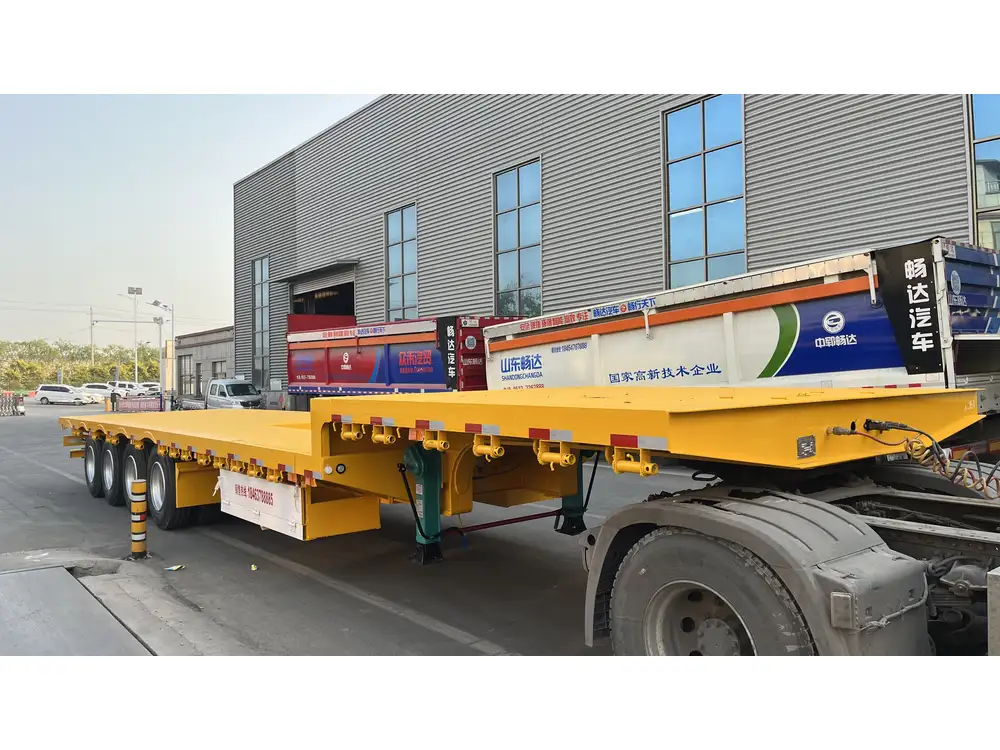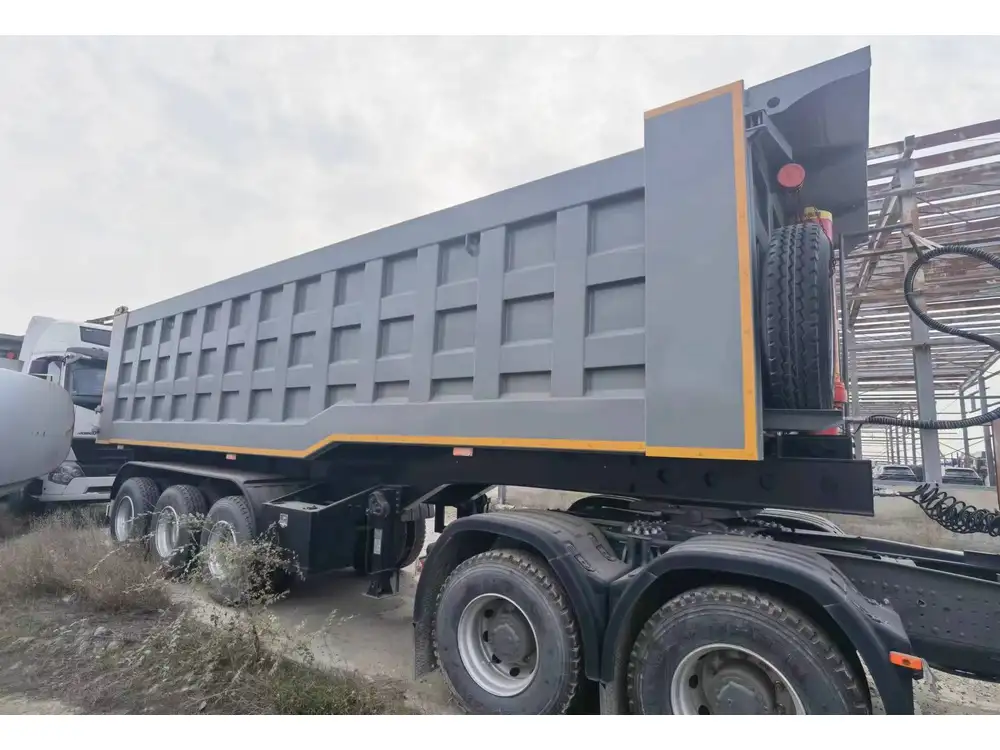In the world of heavy machinery and transportation, understanding the capabilities and limitations of different equipment is crucial for both operators and decision-makers. One question that frequently arises within this field is, “Can the K8400 skidder carry a semi trailer?” This article aims to dissect this inquiry by examining the specifications, functionality, and compatibility of the K8400 skidder with semi trailers, providing valuable insights for those in the forestry and transportation sectors.
Understanding the K8400 Skidder
Specifications and Features
The K8400 skidder is known for its robust design and unmatched power, tailored primarily for logging and forestry applications. To appreciate whether it can carry a semi trailer, let’s analyze some core specifications:
| Feature | Specification |
|---|---|
| Engine Power | 200 HP (approximately) |
| Operating Weight | 18,000 lbs |
| Load Capacity | Up to 15,000 lbs |
| Maximum Lift Capacity | 8,000 lbs |
| Ground Clearance | 15 inches |
| Traction Mechanism | Hydrostatic drive |
| Axles | Heavy-duty, all-terrain |
Equipped with a hydrostatic drive system, the K8400 skidder offers excellent maneuverability while navigating rough terrains. Its powerful engine enables it to effectively lift and transport substantial loads, making it a feasible option for various applications. However, when it comes to semi trailers, several factors come into play.

The Role of Load Capacity
The load capacity of the K8400 skidder is one of its most defining characteristics. With a maximum lift capacity of around 8,000 lbs, it is paramount to compare this with the standard weight of semi trailers, which typically ranges from 10,000 lbs to 30,000 lbs depending on the size and design.
Weight Comparisons
| Trailer Type | Average Weight |
|---|---|
| Standard Semi Trailer | 10,000 – 30,000 lbs |
| Flatbed Trailer | 12,000 – 30,000 lbs |
| Enclosed Trailer | 7,000 – 25,000 lbs |
| Specialty Trailers | Varies greatly |
As observed from the table above, the average weight of semi trailers greatly exceeds the maximum load capacity of the K8400 skidder. This inherently suggests that carrying a full semi trailer is unfeasible for this skidder model.
Compatibility with Semi Trailers

Hitching Mechanism and Coupling
To further analyze the potential for the K8400 skidder to carry a semi trailer, one must consider the hitching mechanism and compatibility of coupling systems. Semi trailers generally employ a fifth wheel coupling, which requires a compatible male hitch (commonly found on tractors) to provide stability and support during transit.
In contrast, the K8400 skidder utilizes a different hitching mechanism primarily designed for log transport. The dimensional mismatch and coupling incompatibility further complicate the question of whether this skidder can effectively carry a semi trailer.
Terrain and Operational Conditions
The operational environment plays a vital role in determining equipment performance. While the K8400 skidder is optimized for rough, uneven terrain—characteristics prevalent in forestry operations—semi trailers are designed for paved or relatively stable roads. Consequently, transporting a semi trailer with a skidder could yield severe operational inefficiencies and potential risks.
Alternatives to Consider
Given the limitations of the K8400 skidder for transporting semi trailers, it is worthwhile to explore alternatives.

Equipment Options for Transporting Semi Trailers
Heavy-Duty Tractors
- Designed specifically for hauling and towing.
- Greater power-to-weight ratio.
- Compatible fifth-wheel hitches.
Articulating Trucks
- Feature robust suspension systems.
- Excellent off-road capabilities.
- Ideal for construction or logging sites.
Lowboy Trailers
- Allow for loading heavier equipment.
- Primarily used for transporting construction and agricultural equipment.
Specialized Transport Equipment
- Flatbed trucks or low loaders for oversized payloads.
- Maximizes stability and transport safety.
By leveraging these options, operators can optimize their logistics and operational efficiency without risking damage to equipment or cargo.
User Considerations: Safety and Compliance
Understanding Weight Limits
It is crucial for users to comprehend the regulatory weight limits imposed on various types of transport. Exceeding the load limits can result in severe penalties and hazards, including brake failures, increased wear on tires, and insufficient vehicle control.
Transporting a semi trailer with the K8400 skidder not only risks damage to the equipment due to overloading but also compromises safety on the road. Knowing and adhering to legal constraints is paramount for any transport undertaking.

Safety Protocols
When working with heavy equipment like the K8400 skidder, adhering to safety protocols is non-negotiable. These include:
- Proper Training: Ensure all operators are trained and certified in equipment handling.
- Regular Inspections: Conduct routine checks on both the skidder and the trailers to maintain optimal performance.
- Load Distribution: Properly distribute loads to maintain stability, as imbalanced cargo can lead to accidents.
Case Studies and Real-World Applications
To truly appreciate the limitations of the K8400 skidder regarding semi trailer transport, examining real-world applications can be insightful.
Case Study: Logging Operations
In logging operations, K8400 skidders excel at transporting logs from the forest to loading points. Operators utilize specialized dollies or log trailers that suit the skidder’s design. In this scenario, the equipment operates efficiently within its limits, highlighting the importance of using the right machinery for specific tasks.

Comparative Analysis: Skidder vs. Tractor Trials
A comparative operational trial was conducted to determine the efficiency of a K8400 skidder versus a dedicated semi-tractor for transporting equipment. Results indicated that while the skidders performed admirably in wooded areas, the tractor significantly outperformed under highway conditions, transporting greater loads with greater safety margins.
Conclusion: The Verdict on K8400 Skidder and Semi Trailers
Through extensive analysis, it is evident that the K8400 skidder is unsuitable for carrying semi trailers due to its limited load capacity and incompatibility with typical coupling systems. For operators seeking to transport trailers, a more powerful, purpose-built vehicle is advisable.
The K8400 remains an outstanding choice for specific applications like forestry, but transitioning to an appropriate vehicle for transporting semi trailers ensures operational efficiency and adherence to safety standards.
Final Recommendations
- Assess Equipment Needs: Evaluate the specific tasks required and choose machinery accordingly.
- Compliance with Regulations: Understand local transportation laws and weight limits.
- Invest in Training: Ensure personnel are qualified and knowledgeable about the equipment being used.
By following these insights, stakeholders in forestry and transportation can make well-informed decisions that enhance productivity and safety, while avoiding common pitfalls related to improper equipment utilization.



